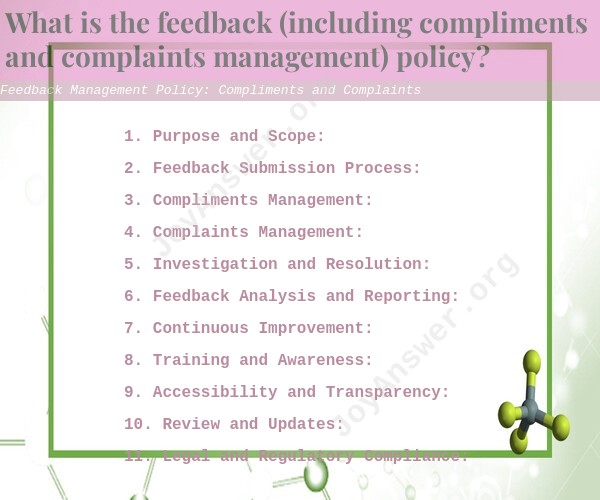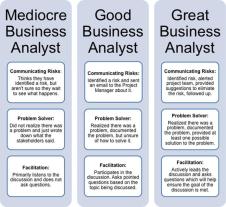What is the feedback (including compliments and complaints management) policy?
A Feedback Management Policy, which includes both compliments and complaints, outlines an organization's approach to collecting, addressing, and utilizing feedback from customers, clients, employees, or other stakeholders. This policy is designed to ensure that feedback is managed in a systematic and effective manner, with the ultimate goal of improving products, services, and processes. Below is an outline of the key components typically found in such a policy:
1. Purpose and Scope:
- Define the purpose of the policy, which is to encourage the submission of feedback, both positive (compliments) and negative (complaints), and to outline how the organization will manage and respond to this feedback.
- Specify the scope of the policy, including the types of feedback covered (e.g., customer feedback, employee feedback) and the channels through which feedback can be submitted.
2. Feedback Submission Process:
- Describe the various methods or channels through which feedback can be submitted. This might include online forms, email, phone, in-person interactions, or suggestion boxes.
3. Compliments Management:
- Explain how compliments will be received, acknowledged, and recorded.
- Define how compliments will be shared within the organization to recognize and motivate employees or teams.
- Specify any actions taken to encourage and reward individuals for generating compliments.
4. Complaints Management:
- Outline the process for receiving and recording complaints, including who is responsible for managing and responding to them.
- Define the timeframes within which complaints will be acknowledged and addressed.
- Explain how complaints will be escalated if they cannot be resolved at the initial stage.
- Highlight the commitment to maintaining confidentiality and treating complainants respectfully.
5. Investigation and Resolution:
- Describe how complaints will be thoroughly investigated to understand the issues and their root causes.
- Explain the steps involved in resolving complaints, which may include corrective actions, refunds, or other remedies.
6. Feedback Analysis and Reporting:
- Explain how feedback data will be analyzed to identify trends and areas for improvement.
- Specify how feedback will be reported to management and used to inform decision-making.
7. Continuous Improvement:
- Emphasize the organization's commitment to using feedback as a tool for continuous improvement in products, services, and processes.
- Explain how feedback will be integrated into strategic planning and quality assurance efforts.
8. Training and Awareness:
- Outline any training provided to employees on handling compliments and complaints.
- Describe how the organization promotes awareness of the feedback policy among stakeholders.
9. Accessibility and Transparency:
- Ensure that the policy is accessible to all stakeholders, typically through the organization's website or other communication channels.
- Emphasize the organization's commitment to transparency in the feedback management process.
10. Review and Updates:
- Specify the schedule for reviewing and updating the policy to ensure its ongoing relevance and effectiveness.
11. Legal and Regulatory Compliance:
- Ensure that the policy complies with any legal or regulatory requirements related to feedback management, particularly in industries with specific regulations (e.g., healthcare, finance).
12. Contact Information:
- Provide contact information for individuals or departments responsible for managing compliments and complaints, including their roles and responsibilities.
A well-structured Feedback Management Policy not only helps organizations handle compliments and complaints effectively but also demonstrates a commitment to customer or stakeholder satisfaction and continuous improvement. It should be communicated clearly to all relevant parties and consistently implemented throughout the organization.












